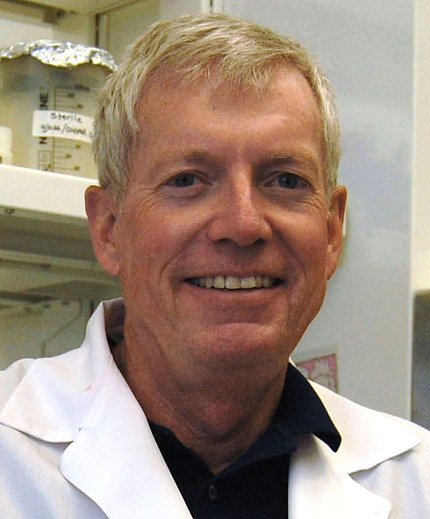Belshe To Give Chanock Lecture

Infectious disease and immunology physician and researcher Dr. Robert Belshe will deliver the NIAID Robert M. Chanock Memorial Lecture at 9 a.m. on Tuesday, Oct. 24. His talk, “What Happened to the Superior Efficacy of the Live-Attenuated Influenza Vaccine and Where Do We Go from Here?” will take place in the Bldg. 50 first-floor conference room.
Belshe, who served as an infectious diseases fellow under Chanock, is currently the Dianna and J. Joseph Adorjan endowed chair of infectious diseases and immunology, emeritus, at Saint Louis University Medical Center. He previously designed and led pivotal clinical research—including trials of live-attenuated influenza vaccines—as director of an NIAID vaccine and treatment evaluation unit, first at Marshall University in Huntington, W.Va., and then at Saint Louis University. His laboratory is currently researching live-attenuated respiratory virus vaccines to protect against respiratory syncytial virus, parainfluenza and influenza.
Belshe will discuss why the efficacy of the live-attenuated influenza vaccine has declined over the past two decades. A 1998 study showed the vaccine had significantly improved efficacy in children compared with the inactivated influenza vaccine, but recent studies no longer show the live-attenuated vaccine to be a superior option. Belshe will explore the potential effects of changes in manufacturing methods and the natural evolution of influenza viruses on the reduced efficacy of the vaccine. He also will present an overview of vaccines in development that show promise of improved efficacy against influenza.
Belshe has received numerous honors for his research accomplishments, including the Academy of Science of Saint Louis Outstanding Communicators Award. In 2005, he was also named to the Scientific American list of 50 Leaders Shaping the Future of Technology for his work on novel approaches to influenza vaccination.
The lecture honors the late virologist Chanock, who worked at NIAID for more than 50 years, including more than 3 decades serving as chief of the Laboratory of Infectious Diseases. Among other accomplishments, Chanock was the first to identify respiratory syncytial virus in humans as well as several parainfluenza viruses. He also collaborated in developing a rotavirus vaccine, an adenovirus vaccine, a monoclonal antibody to prevent respiratory syncytial virus disease and the first nasal spray influenza vaccine.
